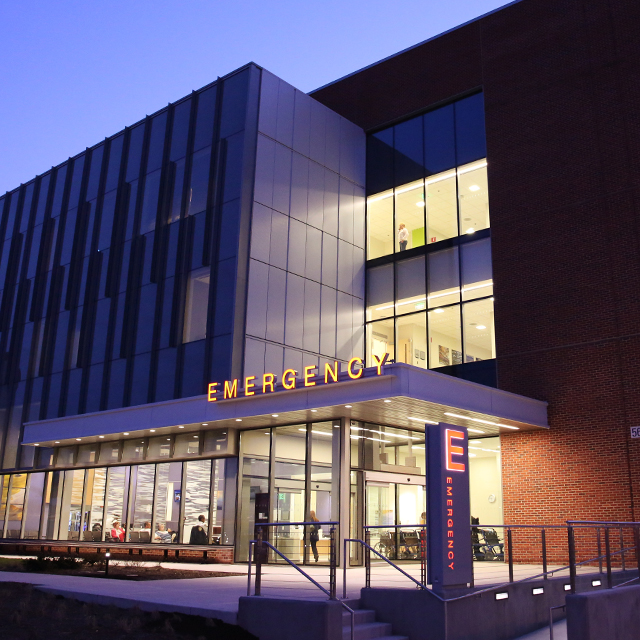The lunchtime crowd gathering at an information table outside the cafeteria at The Johns Hopkins Hospital resembles a back-up on I-95—a situation when drivers traditionally reach for their phones, apply mascara or fish around for a better CD.
Kathy Noll is on the case. As manager of the adult trauma program of The Johns Hopkins Hospital, her job today is helping people learn how to prevent some of the “distracted driving” crashes that plague her department. She hands one gentleman a brochure detailing all the ways he might get himself in trouble behind the wheel.
“It seems like more and more people are trying to multitask as they drive,” she tells him. “Not that you’d ever do that, sir, but just in case, here’s a list.”
The risk factors include texting, reading on a cell phone, eating, drinking, checking missed phone calls or voicemails, using a GPS device. Sound familiar?
On this April day, Noll has joined with colleagues Susan Ziegfeld, who manages the hospital’s pediatric trauma and burn center programs, and Lauren Malloy, coordinator for pediatric injury prevention programs, to call attention to dangerous driving habits. The presentation is being held at the very same time by four other nurses who manage trauma programs within Johns Hopkins Health System.
Over at Johns Hopkins Bayview Medical Center, Marie Dieter and Natalie Tredway, who manage programs for the Adult Trauma Center and the Burn Center, are hosting a similar event. Meanwhile, Melissa Meyers, trauma program director of Suburban Hospital, is educating folks in Montgomery County. And Shaila Chopde, who coordinates the trauma center program at the Wilmer Eye Institute, is sharing space at Johns Hopkins Bayview.
Distracted Driving is one of the community outreach efforts these administrators coordinate each year to reduce injuries for thousands of Marylanders who are treated at the state’s specially designated trauma centers.
Johns Hopkins Medicine operates three of the nine adult trauma facilities in Maryland’s trauma system—and one of two pediatric trauma and burn centers. Additionally, it runs the state’s only designated adult burn center and the only center certified to treat traumatic eye injuries.
All six Johns Hopkins trauma program managers are nurses with advanced degrees and extensive experience in patient care. They are responsible for maintaining the patient registries that supply vital information to state and national trauma data banks, and for making sure that their centers comply with the state trauma-specific regulations needed to keep their certification.
They also manage staff and research projects, offer trauma education seminars, and meet regularly to discuss how to improve patient care and outcomes. And they’re always ready to explain how a trauma center differs from an emergency room.
“We’re still fighting the perception that if you have an emergency department, you can take care of anything,” says Meyers, who often finds herself telling patients and their families why their ambulance passed other hospitals on the way to Suburban.
In Maryland’s emergency medical services system, 85 percent of patients who are injured are taken to the nearest hospital emergency department, but the rest are directed to trauma centers that offer advanced medical and surgical services 24 hours a day.
For rapid response and resuscitation, trauma centers have protocols that most community hospitals don’t. They also treat patients with severe injuries that fit certain criteria determined by the Centers for Disease Control and Prevention. Blunt trauma injuries result from such incidents as car crashes, falls and blunt assaults, while penetrating trauma injuries cover gunshot and stabbing wounds. (Conditions that do not qualify for trauma center care include heart attacks, drug overdoses and infectious diseases.)
Although trauma patients may arrive through the emergency department, they are assigned to an extensive trauma care team who manages their hospital stay after their surgery and stay in intensive care.
Johns Hopkins Bayview, for instance, treats more than 2,400 trauma patients each year. Every impending arrival summons a team that might consist of a trauma surgeon, a burn surgeon, a senior surgical resident, an anesthesiologist, an emergency medicine physician, a trauma nurse, a trauma nurse assistant, a burn center nurse, a critical care nurse, an operating room nurse, a respiratory therapist and a radiology technologist, along with other critical resource personnel, such as the nursing supervisor, the chaplain and security staff.
Subspecialty medical services such as orthopaedics, neurosurgery, plastic surgery and cardiology are also available around the clock, according to program manager Dieter, who co-chairs the hospital’s trauma joint practice council. She also chairs the trauma quality improvement committee for the Maryland Institute for Emergency Medical Services Systems, the agency that oversees the state’s emergency medical care and verifies and designates the state’s trauma centers.
Dieter says injury prevention remains a priority for her fellow program managers. In addition to improving the review and reporting of trauma care, they are developing a Stop the Bleeding Campaign that will teach health care providers, security officers and first responders how to apply pressure and tourniquets for hemorrhages. In September, they will hold another same-day community awareness event on how to prevent the falls that cause nearly 40 percent of trauma admissions in Maryland.
“This field has historically been associated with quality improvement,” she notes. “Trauma is a team sport. We are all contributing what it takes to make the system work better.”



